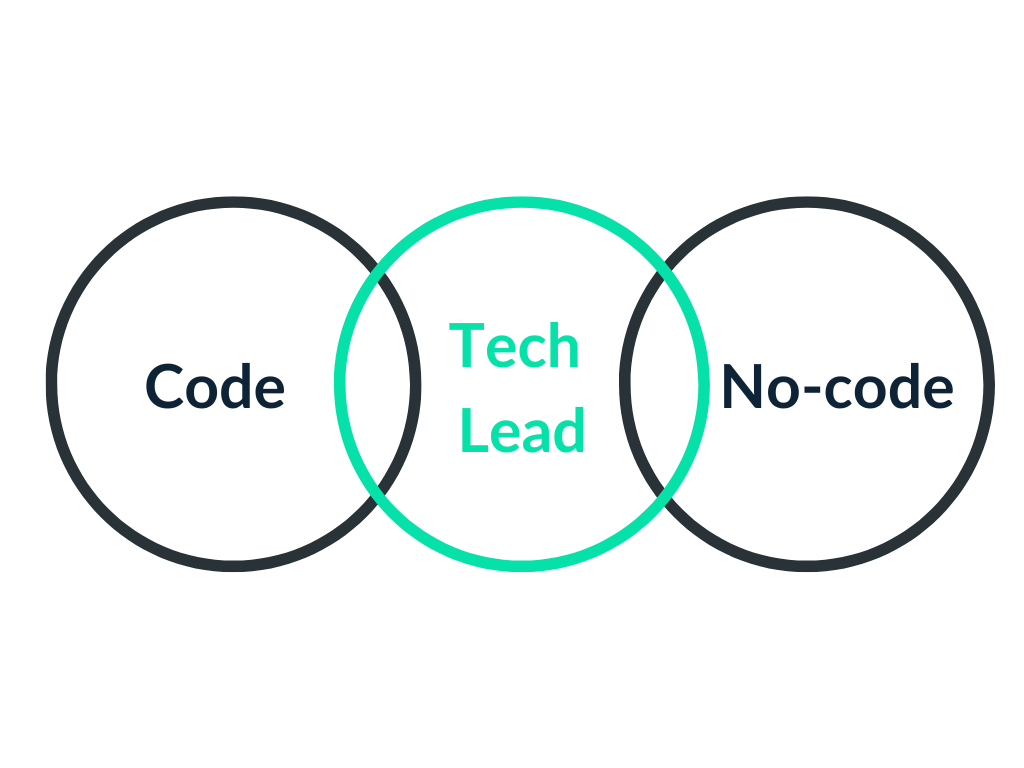The constantly adapting Tech Lead
Answering a very common question that Tech Leads have: “What do I focus on?”
There are three primary Tech Lead archetypes:
The Technical Tech Lead: the go-to person for technical expertise.
The People Tech Lead: focuses on people and team dynamics.
The Adaptive Tech Lead: dynamically adapts between tech and people focus.
With these three complex types in mind, a very common question that Tech Leads have: “OK, now what? What do I focus on?”
To answer this question, start by understanding your default Tech Leadership style.
Code or no code?
The reality is, that your default style usually falls into one of the first two categories.
You either recharge your energy from solving tech problems or from solving people's problems. It’s that easy.
To discover your default Tech Lead style start with some self-reflection:
What are your strengths?
You can use tools like https://www.viacharacter.org or StrengthsFinder
Find out your work style
Answer these questions:
What excites you from your day-to-day work?
Is it playing with new technology, finishing a task, or getting a room full of people to agree?
What drains your energy in the day-to-day work?
Is it talking to people? meetings? Pairing? Coding?
If it would be to choose between a day full of 1-1s and a day full of coding what would you choose?
When you answer, make sure to be honest with yourself - answer with the current reality not with what you would like it to be 😉
Secondly, observe the signs telling you that you tend to be on one side or the other.
Signs you like to stay more on the code part:
You are the most knowledgeable person on the team about projects the team owns and the technology the team uses
You review PRs after work
You are the one proposing technical solutions most of the time
Team members come to you first with technical problems
You are the main driver of technical innovation and upgrading to new technologies
Signs you like to stay more on the no-code part:
You spend most of your day in meetings
You find yourself in situations where you are not sure what task the team is talking about
You have no focus time: always jumping from one thing to another
The team complains about you being away much
You are not able to follow tech huddles team conversations
Each team member is focused on their own task and no big-picture conversations (like architecture) are happening
Most tech leads fall into the first category: they focus on tech. Tech comes easy to them, this is what they have been focusing on until now. Going on the other side is risky, is challenging, and makes them more prone to error.
Where you want to be as a Tech Lead is in between these two types.
Adapting as a Tech Lead
The first step to becoming an adaptive Tech Lead is to recognise in which default category you fall, how this work for your team currently, and what you would like to change and start going towards the other side.
In this transition back and forward is where you become an adaptive tech lead.
Being an adaptive Tech Lead might also mean you might have to go completely on one side for a while:
The plan is ready and we have a big deadline coming up? ➡ code alongside the team to get things done
There is a new big feature coming in some weeks? ➡ Focus on getting all needed information, and planning alongside with product and other parties involved to set the team up for success (even if that means being a bit away from the day-to-day)
The second step of becoming an adaptive Tech Lead is being aware and taking into consideration what others expect from you:
Company official expectation
Check official documentation on expectations for your role
Stakeholders
Ask all stakeholders around you what they expect from you, especially your manager
Your team
What type of Tech Lead does your team want? ➡ Gather input from every team member
What type of Tech Lead does your team need? (This might or might not be aligned with what the team says they need)
An adaptive Tech Lead understands that these expectations keep on changing and is willing to switch back and forth to adapt to them.
This being said, I want to emphasise that none of these styles is better or worse.
Each style brings its own challenges and fits differently in different teams and different team cultures. That is why adaptability is so important.
I deep dive into this topic part of my O’Reilly online course for Tech Leads.
Thank you so much for being here! ☀️
Remember: you are not alone on this journey 😊
Until next time,
Ane





Really good summary, I thought I am weird leaning towards both sides. Even though I am not the official tech lead in our team, I often think we can do better as a team having more big picture conversations (business included) and sometimes I feel more responsible for some bigger code refactor. Could you recommend someth to improve team work without looking like willing to take our lead position - as I fully respect management decision for him.
I really enjoyed it! Thanks :D